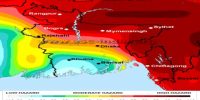For at least 11,000 years, the eastern Pacific Ocean has experienced a cycle of warm and cold conditions known as El Niño and La Nina, respectively. This is El Niño -Southern Oscillation (ENSO), which is important for the climate of many regions of the world. ENSO’s models understand what will happen as the climate crisis escalates, but despite the uncertainty its consequences are all around worse. Two studies published in Nature Review Earth and Environment and Nature Climate Change have attempted to address the complexity of ENSO’s variability.
Despite the apparent contradictions, both in the Pacific and beyond have had dramatic consequences in terms of weather patterns, rainfall, droughts, and temperature changes. Co-author on both studies Malte Stuecker, from the University of Hawaiʻi at Mānoa, said in a statement, “The latest IPCC report clearly shows that if we do not strictly control our emissions, we will move towards temperatures that the earth has not seen for millions of years.”

“Moreover, we can now say with certainty that all the global warming that has taken place since the middle of the 19th century is due to human activity. While these are cruel truths, we must not despair. In fact, if societies choose a path In short, the report further shows that we will avoid the worst possible future consequences and that the Earth will experience only moderate excess warming in this century that we can probably adapt to.” In the review work, the team synthesized results from several models that have seen the emergence of variability in ENSO since the 1950s compared to the paleoclimate data of the previous century.
Nature’s work on climate change is the latest and most precise model with a resolution of 10 kilometers (6.2 miles) at sea and 25 kilometers (15.5 miles) in the atmosphere. The simulation took more than a year to complete, making it one of the fastest supercomputers in South Korea. In that model, ENSO variability would break down. However, similar to other models, rainfall and drought are becoming more extreme – and they are going to do it sooner rather than later. Prof. Axel Timmermann, co-corresponding author and Director of the ICCP, said in a statement, “Two generations of climate scientists have looked at this problem using climate models of varying complexity. Some models are poorly simulated; others predict temperatures in the eastern Pacific will raise in future warmer climates. The jury was still out.”














